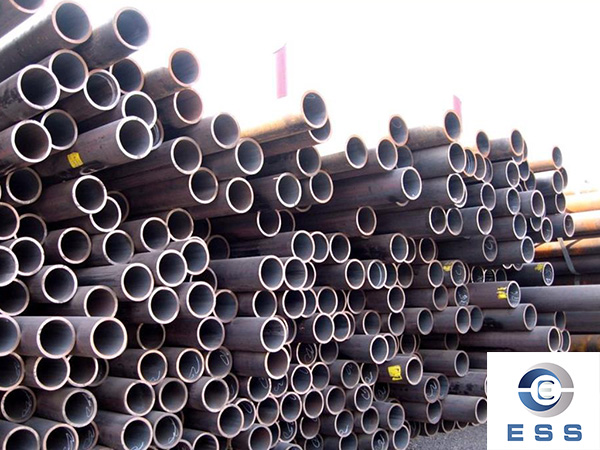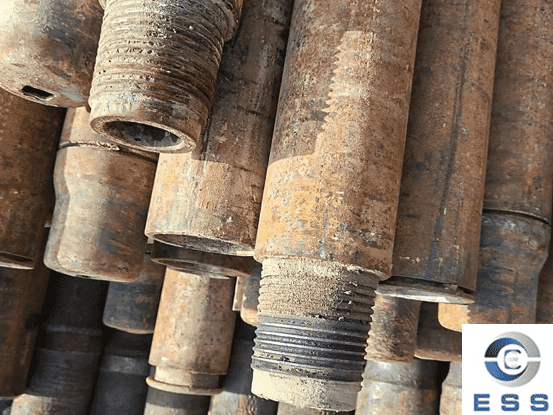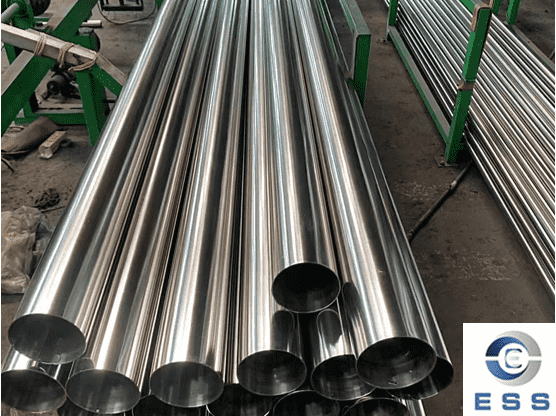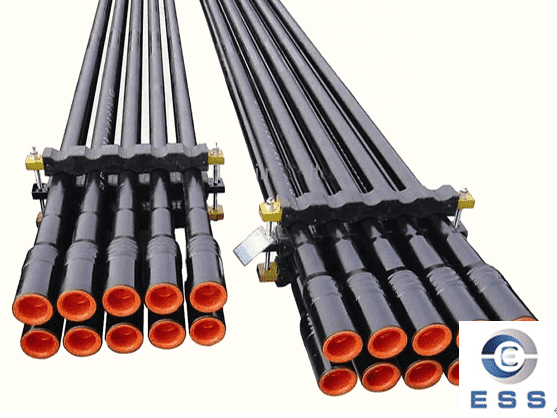Seamless pips for fluid transportation
A fluid pipe is a steel pipe with a hollow cross-section, from end to end, without welds. The steel pipe has a hollow section, and is widely used as a pipeline for transporting fluids to transport oil, natural gas, gas, water and certain solid materials. Compared with solid steel such as round steel, the steel pipe is lighter in weight when the bending and torsional strength is the same. and steel scaffolding used in building construction.
The fluid pipe is a pipe specially used for conveying medium with fluid properties. In addition to liquid media such as water, oil, and solution, solid media such as cement, grain, and pulverized coal can also flow under certain conditions.
Fluid pipes can be made of steel, non-ferrous metals such as copper, titanium, or even non-metallic materials such as plastics. The fluid pipe must have a hollow section, but it can also be square, triangular or any other shape. Some equipment is limited by conditions and must use a rectangular pipe, but most of them still use round pipes. The circular tube has the smallest circumference/area ratio of all geometrical sections, that is, the largest inner section can be obtained with the same amount of material.

seamless vs welded pipe
Due to its low cost and high strength, steel pipes are widely used in fluid transportation in modern society. According to its production process, steel pipes are divided into two categories: seamless steel pipes and welded pipes, among which welded pipes are further divided into high-frequency straight seam welded pipes (ERW), spiral welded pipes (SSAW), submerged arc welded pipes (UOE) and so on. In the past, seamless steel pipes were traditionally used for fluid pipes. With the development and progress of material science, forming technology, and unit equipment, welded pipes have been greatly developed. Welded pipes have the advantages of better wall thickness uniformity, higher precision, less energy consumption and higher production efficiency than seamless pipes. Oil and gas transmission pipes (API standards) are highly demanding. In the past, almost 100% of seamless pipes were used. Today, in developed countries More than 95% of them have been replaced by welded pipes.
When the welded pipe is used as a fluid pipe, it has different requirements from ordinary steel pipes:
1. The welding seam is not allowed to leak. For the welded pipes required by API, it is also required to carry out ultrasonic flaw detection and hydrostatic test on the weld of each welded pipe;
2. For conveying corrosive chemical solutions, all steel pipes must be treated with anti-corrosion treatment on the inner wall;
3. All fluid pipes need to remove internal burrs to reduce fluid delivery resistance.
Manufacturing method
①Generally, the temperature of boiler tubes is below 450℃, and they are mainly made of No. 10 and No. 20 carbon-structured steel hot-rolled tubes or cold-drawn tubes.
② High-pressure boiler tubes are often used in high temperature and high pressure conditions, and the tubes will be oxidized and corroded under the action of high-temperature flue gas and water vapor. The steel pipe is required to have high lasting strength, high oxidation corrosion resistance, and good microstructure stability.
use
①General boiler tubes are mainly used to manufacture water wall tubes, boiling water tubes, superheated steam tubes, superheated steam tubes for locomotive boilers, large and small smoke tubes and arch brick tubes, etc.
②High-pressure boiler tubes are mainly used to manufacture superheater tubes, reheater tubes, gas guide tubes, main steam tubes, etc. of high-pressure and ultra-high-pressure boilers.
However, round pipes also have certain limitations. For example, under the condition of plane bending, round pipes are not as strong as square and rectangular pipes.
Some agricultural machinery skeletons, steel and wood furniture, etc., are commonly used. Special-shaped steel pipes with other cross-sectional shapes are also required according to different purposes.
1. Seamless steel pipe for fluid transportation (GB/T8163-2008) is a general seamless steel pipe used for conveying fluids such as water, oil and gas.
Curvature
The outer diameter and wall thickness should meet the requirements of GB/T17395 "Seamless Steel Pipe"
Length:
1. Hot-rolled (extruded, expanded) steel pipe is 3-12m
2. Cold drawn (rolled) steel pipe is 3-10.5m
Bending:
1. When the wall thickness is less than or equal to 15mm, it shall not be greater than 1.5mm/m
2. When the wall thickness is greater than 15mm, it shall not be greater than 2.0mm/m.
3. When the outer diameter is greater than or equal to 351mm, it shall not be greater than 3.0mm/m
(outer diameter-wall thickness)*wall thickness*0.02466=kg/meter (weight per meter)
Read more :Difference between seamless pipe and seam pipe













 Eastern Steel Manufacturing Co.,Ltd not only improve product production and sales services, but also provide additional value-added services. As long as you need, we can complete your specific needs together.
Eastern Steel Manufacturing Co.,Ltd not only improve product production and sales services, but also provide additional value-added services. As long as you need, we can complete your specific needs together.










